On Gold Mountain: The One-Hundred-Year Odyssey of My Chinese-American Family Read online
Page 13
The Sacramento business record lists “Fong Lie” as an original member of the Suie On Company dating from 1894. In early interrogations, Fong See stated that this person, Fong Lai, was his brother. The next set of business papers lists a Fong Lai, but indicates that he didn’t acquire his partnership until 1896. Subsequent interviews present a very different picture.
On July 20, 1912, Fong See told an inspector that his brother, Fong Lai, had died eighteen years earlier, in 1894, leaving behind a widow (a foot-bound woman), a boy, and no girls. On this same date, Richard White testified that Fong Lai was an active partner in the Los Angeles store. It wasn’t until May 1917, however, that “Fong Lai” applied for lawfully domiciled Chinese merchant status so that he might return to China for a visit. He based his request on the partnership records of the F. Suie One Company.
On May 11, 1917, in an interview on Fong Lai’s behalf, Fong See said that Fong Lai would have been fifty-six, but died “a long time ago in China,” and was never in the United States. Realizing his error, he later interrupted the pattern of the questioning: “I want to make a correction,” he said. “My brother, Fong Lai, used to be my partner in my store here in Los Angeles, and went back to China about twenty years ago.” Later he added that Fong Lai was fifty-two years old. If he was fifty-two, then Fong Lai would have been a toddler when he accompanied his father, Fong Dun Shung, to work on the railroad, never mind that he would have been younger than his so-called “younger” brother, even with all the complexities of that date. “Fong Lai’s” own testimony muddies the waters further; in it he states that he was fifty years old, born in Wah Hong village in the Sun Ning district. He also said that he returned to China not in 1897, as earlier reported, but in April 1908, for a year-long visit.
With Fong Lai, the family participated in a clever shell game. Fong Lai, the brother, certainly existed. But this new Fong Lai was really Ing Lai, more commonly referred to as Dai-Dai by the family. This Fong Lai was a friend from China who’d entered the country on the original Fong Lai’s papers. The first Fong Lai went back to China in 1897, apparently returned to the United States, and went back to China again in 1908, where he died. Although the photograph of the Fong Lai of 1917 showed a very different-looking man, immigration officials paid no attention. By this time, Fong See had enough respect in the white community that the officials of the Immigration Service didn’t look very hard.
“There is no doubt that this applicant is now and has been for a number of years a merchant, member of the F. Suie One Co., of this city, which has three separate stores each of which is well stocked with Chinese and Japanese curios and art goods,” wrote Inspector W. A. Brazie. “The testimony of the witnesses shows that he is a bona fide merchant and he is well known to this office as a member of the firm above noted.”
For a man who sometimes aged merchandise in horse manure or coaxed Pasadena matrons into paying more than they should, this scam was easy. Paper sons proved to be trickier, as both Fong See and Fong Yun learned when they tried to establish the existence of new “sons.” In 1910, after a visit to Dimtao, Fong Yun, during the usual holdover at Angel Island, suddenly announced that he had two sons in China—Fong Ming Gong (aged thirteen) and Fong Ming Lung (aged eight). Two years later, Fong See told an inpsector that his first wife, Yong, whom Ticie had met in China, had died—a truth. He went on to say that she had two children—a baby girl who died when she was a few days old, and a son, Fong Hong, who was born in 1881, the very year that Fong See maintained to authorities that he arrived in the United States. Next to the questions and answers regarding Fong See’s so-called children the immigration officer marked each line with a dramatic slash. Realizing his mistake, Fong See never mentioned Hong again. And, by 1917, records show that Yun’s “sons,” Ming Gong and Ming Lung, had “died.”
For many, these post-earthquake interviews served as a means to change life stories. Both Fong See and Fong Yun reported that their Chinese wives, as well as their mother, Shue-ying, had bound feet. If Fong See and his brother could have wives with bound feet, why not give all the partners’ wives bound feet? Poor as they were, the “partners” hoped that one day the Immigration Service might make allowances and let them bring in these wives of good birth. A small transgression, surely, but one that was telling. Family history and social standing could change with just a few carefully placed words.
By 1910 the F. Suie One Company was the largest store in Chinatown, and Fong See himself was, as Richard White said, “about as near an Americanized Chinaman as can be.” Fong See told officials that he took home seventy-five dollars a month, but this was part of a larger immigration game to give validity to the fact that he paid Fong Yun fifty dollars and the lesser partners only thirty-five dollars a month. All this was as it should be. Fong See was the one who was responsible for the rent—one hundred dollars a month in Pasadena and sixty-five dollars a month paid to the Gee Ning Tong in Chinatown. He was the one ultimately responsible for the partners’ needs: food, lodging, clothes, wives, pastimes.
Fong See had become a man of property, owning three houses in Dimtao. In America, he traded Chinese rugs for forty-four undeveloped acres east of Los Angeles in La Habra. He also bartered merchandise in exchange for property near Signal Hill in Long Beach, named optimistically Athens on the Hill. For years this property would captivate the family with unfulfilled promises of oil riches. These deals showed just how smart Fong See was—to have outflanked and outsmarted the Caucasians yet again. Let them enact their law forbidding any Chinese ineligible for citizenship from buying land in California. He’d “traded” for his, and placed the properties in his American wife’s name.
The world as Fong See knew it was slowly changing. Fong See, who scrupulously avoided the many associations in Chinatown, was always interested in the larger goings-on affecting the Chinese in the country and listened each afternoon as Fong Yun—Uncle, as he was called by the children—read from Chung Sai Yat Po, the Chinese Daily Paper. Mostly the paper reported news of humiliations: An immigration officer had shot a Chinese sailor for spitting at authority; a Chinese man and a Greek man had gotten into a fight when the latter decided not to pay the former for his meal; a cook, who hadn’t been paid his wages, was shot and killed by his white employer. It also reported on new laws: A health ordinance required the inspection of all Chinese businesses that sold food, including restaurants and grocery stores; anyone caught without their resident papers would be jailed, then deported. The paper reported, as well, on new trends in immigration, as it did in 1908, when Mexico temporarily became a new steppingstone on the path to opportunity; Chinese crossed the border on foot and by small boat and horse cart. To reverse this flow, the Los Angeles police were accepting any tips on new faces in Chinatown. New immigrants could be assured of arrest and search. Indeed, a Los Angeles mechanic had recently turned in seven Chinese who were just passing through.
Opium arrests, tong wars, prostitution, and gambling got big play in the Chinese press. In a series of articles, a family association reached out to opium smokers: If you feel bad when you’re quitting, come and get special medicine from us to help you through your pains. Gambling had come under increasing pressure by the whites. The trouble was, Chung Sai Yat Po reported, the Chinese liked gambling the way Americans liked movies. Could the government grant the Chinese a special right to gamble in exchange for their help in arresting those involved in the opium trade?
Fong See always listened to his brother’s readings about interracial marriages with heightened interest. In 1907, Uncle read a news story in Chung Sai Yat Po about a certain Chiu Si Ho who eloped with a Caucasian, much to the consternation of the girl’s parents. That same year, a Chinese man married a Negro woman. No one knew if it was legal, but the pastor decided to go along with it anyway. But for every “success” like these, there were men like Samuel Gompers, who declared that “the Caucasians are not going to let their standard of living be destroyed by negroes, Chinese, Japs, or any others,” and that
“the offspring of miscegenation between Americans and Asiatics are invariably degenerate.” These assertions proved so persuasive that California, Arizona, Georgia, Idaho, Louisiana, Mississippi, Missouri, Nebraska, Nevada, South Dakota, Virginia, Utah, and Wyoming all passed laws forbidding intermarriage between Chinese and Caucasians.
In Fong See’s own home, the world also continued to change. In 1909 the German midwife was called one last time, to attend the birth of Florence, named in honor of Mrs. Morgan, Ticie’s only woman friend. Florence’s Chinese name was Jun Oy—true love. With five children, two stores, and forty-four acres she wished to develop, Ticie had little time for herself. She knew how lucky she was compared to the Chinese wives of laborers, who never had a midwife to see to them. Instead, her neighbors worked until the last minute, then squatted in a corner, groaned, and there would be a new baby son or daughter. After the birth, the woman got up again, cut the cord, washed the baby, and resumed working—doing piecework, rolling cigars, tying onions and scallions into bunches.
The laborers’ wives had hard lives, while the wives of merchants led stultifying, sheltered ones. Merchants’ wives rarely stepped outside their upstairs apartments for fear they would be kidnapped. Like Ticie, many of them had lesser cousins and nephews to do housework, cook, and shop. Some women never left the house except for a moon yuet, the one-month celebration of the birth of their children. Days stretched out with embroidery as their only activity.
Ticie knew all this because she reached out to some of the Chinese mothers in Los Angeles. When a neighbor gave birth to a son, Ticie was usually one of the first to arrive with the traditional Chinese “baby soup” of peanuts, pork, whiskey, and ginger. After Florence’s birth, many of the women returned the kindness, promising that the soup would painlessly bring in Ticie’s milk and help coagulate her blood.
With each new child, Ticie gained in status. With each year that the business prospered, she gained in power. One day she said to her husband, “You’re not under the rule of the Manchus anymore. You live here.” He listened and cut off his queue.
CHAPTER 6
FAMILY DAYS
1914–18
ONE day in 1914, Fong See closed his shop at 50 South Raymond Avenue in Pasadena and boarded the streetcar to take him back to Chinatown. He was a handsome man who looked far younger than his fifty-seven years. Today, as usual, he wore an elegant, tailor-made suit. The only incongruity in his appearance of cultivated refinement was the sack of fruit he carried. No one on the car knew that the day’s earnings nestled among the oranges.
Business in Pasadena was more than he could have hoped for. His customers came to the resort for the winter season—December through May—with suitcases full of cash. They had a love of beauty. They embraced culture. And they had an eye for things Oriental. Fong See knew that when they returned to their eastern homes they talked about the adventures they had coming into his store. In his mind he could even hear them: “You’ve just got to go to the F. Suie One Company. That’s the place to go, all right.”
In Pasadena, he only had non-Chinese customers—most knowledgeable, a few ignorant. The brothers Charles and Henry Greene—among the founders of the California Craftsman architectural movement—understood what he had. They appreciated the simplicity of line, the quality of the wood, the restrained motif. When they came in, they liked to bend over a table or cabinet and examine the skillful tongue-and-groove joinery.
Grace Nicholson was another good customer. She had come to California in 1901 with a few hundred dollars and her skills as a stenographer. She’d quickly abandoned clerical work to open a shop on South Raymond, where she sold American Indian baskets and jewelry. After Fong See moved in next door, she’d taken an interest in Far Eastern merchandise—not just Chinese, but also Korean, Japanese, and Indian. Now, like Fong See, she also sold Asian art to collectors and museums. Fong See didn’t worry about the competition—though Victor Marsh, John C. Benz, and W. W. Gerlach also sold Asian merchandise in Pasadena—because the way Fong See saw it, there were plenty of customers for all of them, with the big hotels so close by. And he was the only one to hold auctions at the Green and Maryland hotels, where he served tea and entertained the tourists with far-fetched tales of kingdoms, warlords, and pirated antiques.
Besides, he had his two other branches in Long Beach and Chinatown. He didn’t concern himself too much with Long Beach. Wing Ho did a wonderful job, with only an occasional visit from Fong See, which usually ended up as a family excursion to the amusement park on the Pike. Fong See was much more involved with the Chinatown store, where Letticie saw to the day-to-day business and looked after the family upstairs. This division of labor made good business sense. Fong See, as a Chinese man, was a novelty in Pasadena. Letticie, as a white woman, offered a sense of security to Caucasians who wanted to venture down to Chinatown, which still had a reputation in Los Angeles as a dangerous place.
Fong See was the most respected businessman in Chinatown, and the only importer of any consequence. That was why, when a sojourner returned to China, he brought his most precious belongings to Fong See in hopes of getting extra cash. What cultured Chinese would have perceived as junk—usually simple household goods such as everyday porcelain or an incense burner—was intriguing to white customers. Fong See could sell these items for ten times what he’d paid.
Fong See still loved money and automobiles. He loved to look through magazines and brochures on cars. In time he would buy his elder sons—Milton and Ray—new cars, a Packard, a Hudson, a Stutz, a Willys-Knight, a Cadillac, a Lafayette—all beautiful, with long, sleek lines and rich colors. If that meant hiring a chauffeur/mechanic to keep the things going, that’s what Fong See would do. From his first days in this country he had realized that only money could protect a man—not a family association or a tong. If you had money, whether it was here or in China, you had protection. And he was a man very well protected.
As far as Fong See was concerned, he had a faqade that needed to be maintained, and his wife would not cooperate. She refused to do as she was told. He had said many times, “No roller-skating. I do not want to see children in skates. Waste of time!” Yet he knew from his brother, and from others who kept him informed, what his wife and children were doing in Chinatown. As he came home from Pasadena, Ticie would call out, “Pa’s coming,” and the younger children—Eddy, Bennie, and Florence—would take off their skates and hide them. No one said a thing as he came in, but he knew just the same.
He was irritated about the boys and furious about Florence. He’d seen to it that Florence was the most photographed Chinese girl in the entire city, and perhaps in the country. She had a unique look about her—solemn, quiet, pensive—that he was always trying to capture. At least once a year, but often every few months, he took her to different photographers—first the Elite Studios, then Hartsook, then Edwin Williams, over on Bonnie Brae. Fong See had photographs of his daughter in Chinese clothes. He had others of her dressed like a princess in organza and lace, with a big ribbon in her hair. She posed on carpets, on piano stools, and holding an armful of paper flowers. She was dainty and perfect. She was not the kind of girl who should be out roller-skating!
He tried to be stern with his wife. He was stern. But in some things Ticie was adamant. When the boys started introducing his Florence as “Sissee,” he was angry. “She has this name for a reason. Am I now to have another child who does not go by the proper name? If you want to call her something else, then call her by her Chinese name, Jun Oy. Not this Sissee.” But his wife just laughed, patted him on the arm, and said, “Now, Pa, what would we say to the boys? That’s their name for her. When customers come in the store and ask who our daughter is, Milton answers, ‘That’s Sister See.’ It’s sweet, don’t you see? Sister See is Sissee.”
They argued constantly about how to raise their daughter. “She is an American girl, Suie. Let her be,” his wife said.
“No, she is Chinese daughter. She needs to be …” He struggle
d over the Chinese words and concepts. His daughter needed to be trained to be virtuous, graceful, courteous, polite, and obedient. “No dancing. No games. Stay home. Learn to sew. Take care of house. This is good daughter.”
“But, Suie, that’s no fun. She’s just a girl.”
“Girl will grow up. She must learn the Three Obediences. When at home, obey father. When in home of husband, obey husband. When she becomes a mother, obey son.”
Ticie had laughed at that. “That’s downright silly.”
How could he make Ticie understand? “No good husband for Jun Oy if not good daughter. She must learn.”
It made no difference to Ticie how often Fong See put his foot down. She simply wouldn’t obey him in matters concerning their daughter. He could trace Ticie’s independent streak to his one big mistake. He should never have given in on the issue of his queue. Well, of course she was right. He would have cut it by now anyway. No one had a queue anymore, since Dr. Sun Yat-sen and his Republic. But that wasn’t the point. First the antiques, then the queue, then his daughter’s name, that’s how it went. Now Ticie was running the Los Angeles Street store. Always she nagged him. “We need to improve. We must improve. No more curios. We’re in the antique business.” When they were in China, he had wanted to buy baskets and fans, and Ticie had said, “Well, of course you should, dear. We’ll always have walk-in trade that won’t be able to spend much money. They’ll just want a little remembrance of their visit to Chinatown. But those are just curios, don’t you see?” She’d wanted to buy architectural wood carvings, clay idols, handicrafts, and embroideries, including shoes for bound feet and children’s caps. Those things he bought, but he’d also gone ahead and shipped crates of fans, baskets, and wickerware.

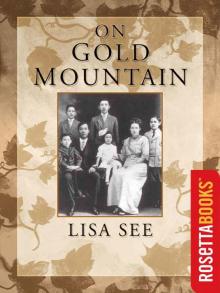 On Gold Mountain: The One-Hundred-Year Odyssey of My Chinese-American Family
On Gold Mountain: The One-Hundred-Year Odyssey of My Chinese-American Family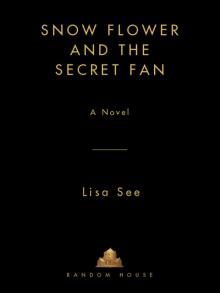 Snow Flower and the Secret Fan
Snow Flower and the Secret Fan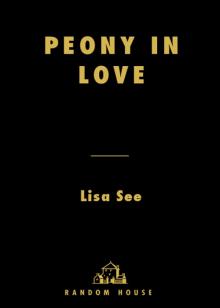 Peony in Love
Peony in Love Flower Net
Flower Net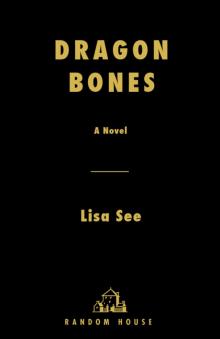 Dragon Bones
Dragon Bones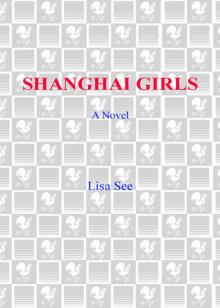 Shanghai Girls
Shanghai Girls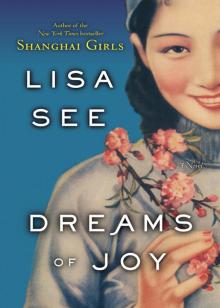 Dreams of Joy
Dreams of Joy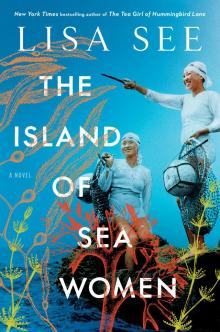 The Island of Sea Women
The Island of Sea Women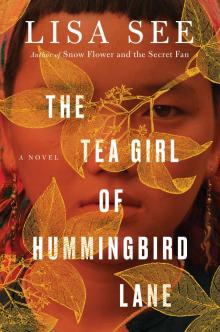 The Tea Girl of Hummingbird Lane
The Tea Girl of Hummingbird Lane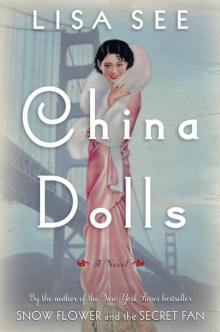 China Dolls
China Dolls The Interior
The Interior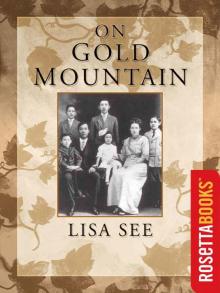 On Gold Mountain
On Gold Mountain